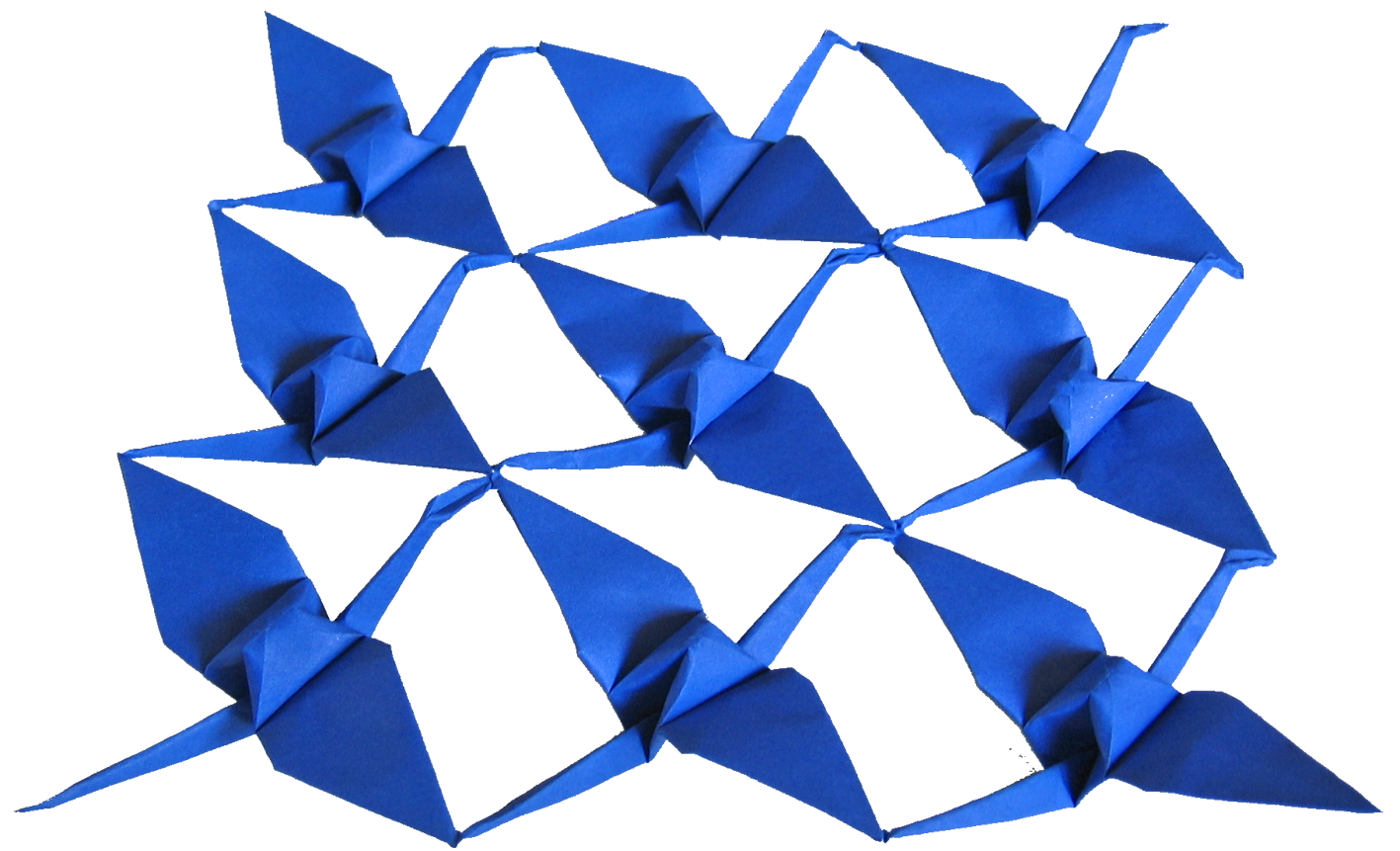 A 1000 cranes
A 1000 cranes

 A 1000 cranes
A 1000 cranes


The crane is the national bird of Japan and a symbol of luck. It is also one of the oldest described origami models and embodies traditional Japanese origami. It is a slight modification of another treasure, the flapping bird. The crane cannot flap, however it is more 3D and elegant with its long, slender neck and tail/legs that point backwards when it flies.
An old tradition is to fold cranes from one piece of paper that is cut into shape. This is described in the oldest surviving origami book, Hiden Senbazury Oricata (The secret of 1000 cranes origami), Japan, 1797.


Obviously there is not really a 1000 cranes, rather the expression "1000" means "many".
A legend tells that he who folds a 1000 cranes, gets a wish fulfilled, typically a long life a good health. See also the story of Sasaki Sadako
The basic steps of the two variations of a 1000 cranes are the same: Mark preliminary folds, cut, and fold the cranes.
Marking: First mark the squares. The mark the head-tail diagonals and the two book folds in each of the squares - i.e. the crease pattern of the square base.
Cutting: Cut out the squares. Be careful to leave small two millimeters uncut around the crosses of the squares where the cranes will hang together. Use a hobby knife, cutting mat, and ruler.
Folding: First fold each square to the square base according to the already marked creases. Next, fold each square to a crane. Start with the inner squares. Finish each crane (except perhaps some detail around the head) so that the other squares are spread out and thus become easier to fold.


Of course you need thin and durable paper. For the examples on this page the 3x3 cranes used a 30 cm origami paper square, and the smaller crane with the baby cranes used a 15 cm foil paper with white back.